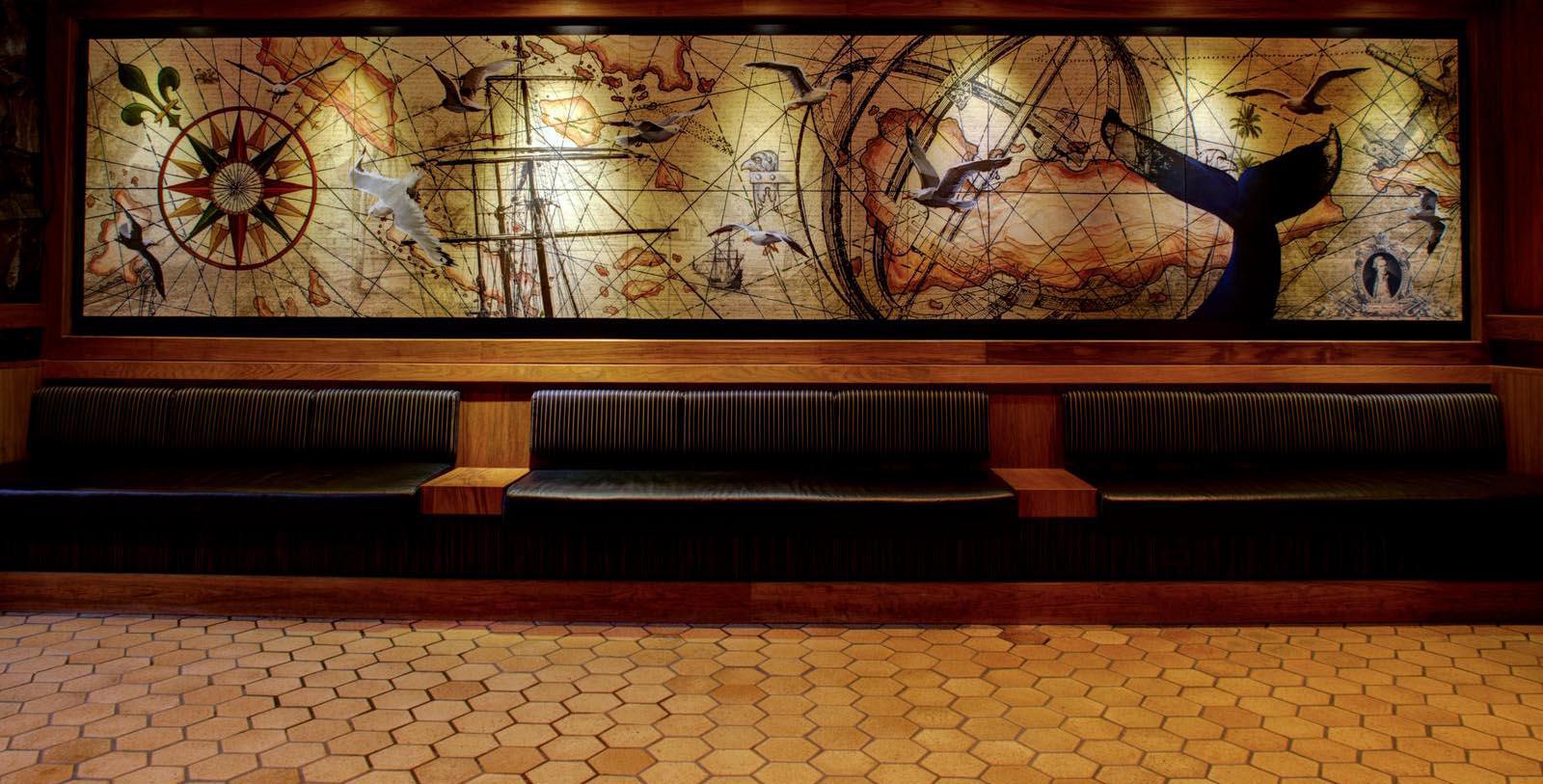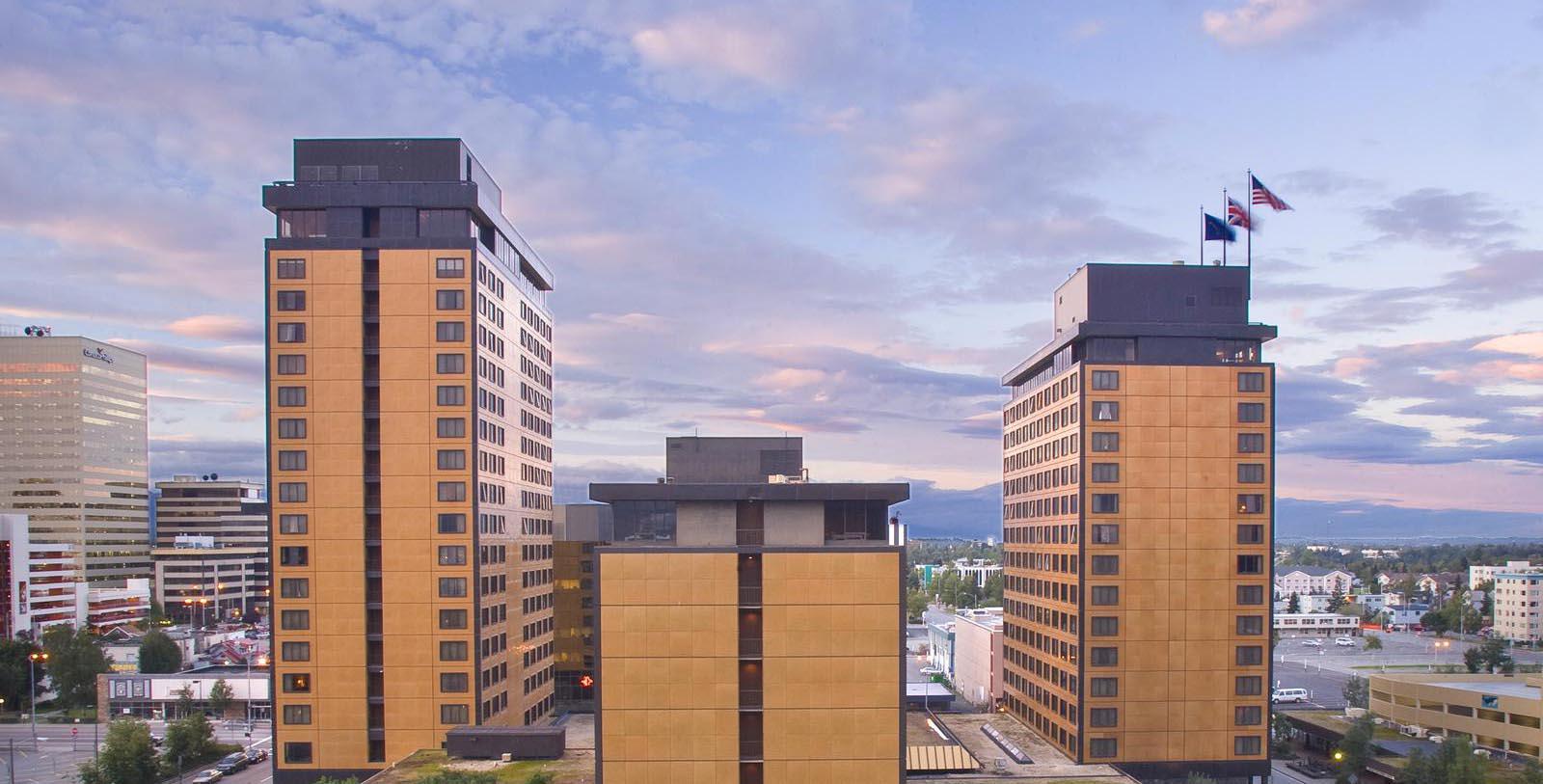Receive for Free - Discover & Explore eNewsletter monthly with advance notice of special offers, packages, and insider savings from 10% - 30% off Best Available Rates at selected hotels.
history
Discover Hotel Captain Cook, which was named for Captain James Cook, who was the first person to map Alaska’s coastline on his final voyage.
Captain James Cook helped define Alaska in the 18th century by mapping its jagged coastline for the first time. Since 1964, the Hotel Captain Cook has defined luxury in Alaska by offering a level of elegance and comfort unparalleled across the state. The legendary sea captain and the hotel that bears his name share two great qualities: a love of nature and an indomitable, Alaskan spirit. Captain James Cook was a British explorer and cartographer whose three major voyages took him around the southern tips of Africa and South America, to Easter Island and, on his final voyage, along Alaska’s majestic coastline. On these voyages, he and his crew documented the people, animals, and flora and fauna that many had never seen before. In June of 1778, while looking for a Northwest Passage to the Hudson Bay, Cook and his crew on the HMS Resolution dropped anchor in Turnagain Arm, within sight of the spot where Hotel Captain Cook stands today.
Walter J. Hickel, a Kansas native who arrived in Alaska in 1940 at the age of 20 with only 37 cents to his name, was a longtime Alaskan entrepreneur, hotelier, author, and served twice as Alaska's governor. His first governorship was as a Republican, from 1966 to 1969. He left office to become Secretary of the Interior under President Richard Nixon and served from 1969 to 1970. His second tenure as governor, from 1990 to 1994, was as a member of the Alaska Independence Party. Hickel was a real estate developer, building and operating hotels, business and shopping centers for decades in Alaska. In 1964, an earthquake leveled much of downtown Anchorage, and many were hesitant to rebuild. Never one to think small, Hickel reacted to the earthquake by pledging to build Alaska's biggest and best hotel in devastated downtown Anchorage. Hotel Captain Cook was named for the intrepid British explorer who helped define Alaska in the 18th century. The first tower of the hotel opened in 1965, and the second and third followed in 1972 and 1978. Today, the 546 guestroom hotel plays host to dignitaries, celebrities, and people from all walks who love the grandeur of Alaska. This fantastic historic hotel has also been a member of Historic Hotels of America since 2016.
-
Art Collection +
The Hotel Captain Cook is replete with many fantastic pieces of artwork that pay homage to the legacy of Captain James Cook, as well as Alaska’s rich maritime heritage. The hotel has actually prepared a wonderful tour of its fantastic art collection, a version of which is presented here: Upon arriving at the Fourth Avenue entrance, take a left and begin down the stairs. At the split landing, there is a painting of the HMS Resolution by Armond M. Kirschbaum. Directly at the bottom of the stairs is a print copy of some of the traditional native dances that Captain Cook would have seen in the Hawaiian Islands. Back on the Main Deck upstairs, outside of the Whale’s Tail visitors will find a wooden sculpture of Alaska’s Bowhead whale.Carved by Karl Kohr, this sculpture is wonderfully warm and a very defined replica. Going into the Whale’s Tail, guests will experience an elegant atmosphere. In front, guests will notice the beautiful bar made of solid teak and inlaid with a black marble top. To the right resides a stained-glass window of Bowhead whales. Completing the room is the back wall where one can see a seven-foot whale created from sheet copper by artist Kenton Pies of Bellevue, Washington.
Leaving the Whale’s Tail, walk directly to “Topside” in the Quarter Deck. To the left, the bar is antique brass, the bar top is solid teak wood and behind the bar is a painting of the Resolution by Armond N. Kirschbaum. The teak decking throughout Tower One was taken from the battleship, the USS Colorado, in Bremerton, Washington. Exiting the elevators to the right, guests will find a hand carved ceremonial board from the Sepik River area of New Guinea. Proceeding down the hall, patrons will come to a cross section model of the HMS Resolution built by Purnal Whitehead. Ahead is the library, which is used for small meetings. Outside the library are displayed several prints of Captain Cook’s journeys in the Sandwich Islands, and a Polynesian water jug from the 1800s. On the left, guests come to Club Room Two. On the left wall is a framed piece of Polynesian tapa cloth made by people in the Pacific Islands. The authentic tapa cloths displayed throughout the Hotel are from the Fiji Islands and are hand made from treated inner bark of mulberry like trees and is painted with vegetable dyes. Finally, visitors will come to Club Room One and a beautiful view of downtown Anchorage. On the wall across from the door to the Club Room are prints of Cook’s voyages in Prince William Sound and a carved wooden canoe paddle from Easter Island. Outside to the right is a hand carved wooden shield from New Zealand.
Returning to the Main Deck, turn left and continue down the hall. As patrons pass the sitting area next to the porte-cochere, there is a model of the HMS Adventure. She was one of the ships used on Captain Cook’s second voyage from 1772 to 1775. On the corridor wall is a large map of the voyages of Captain Cook. Prepared by artist Karl Mann, it shows the three routes of Captain Cook’s voyages and many details of interest in the South Pacific. On the same wall are reproductions of old illustrations of early explorers in the Arctic, A Man and Woman from Oonalashka (the Aleutians) and A Man and Woman of Nootka Sound. Note on the wall across from these illustrations is an antique mailbox from England, used during the reign of King George V of the United Kingdom. Entering the main lobby, notice the Hotel Front Desk with its top of magma granite. On the wall above the desk there are see porthole clocks, which represent the current time at some of Captain Cook’s ports of call. These ports are Anchorage, Vancouver, Hawai’i (Kealakekua), Sydney, and London. Directly behind the front desk to the left, guests will notice a painting by Fred Machetanz of the Resolution anchored in Turnagain Arm.
In the Main Lobby is a half model of the HMS Resolution. Half models were often used in the construction of the main ship prior to its departure. The large painting next to the Concierge Desk is The Great Blue by Alaskan artist Armond M. Kirschbaum, which depicts one of the ocean’s greatest creatures, the giant blue whale. To the right of the Concierge Desk is a solid copper bust of Captain James Cook, made by Derek and Patricia Freeman. The original, made in Whitby, England, is located at the lookout nearby on the corner of Third Avenue and L Street. Under the bust of Captain Cook is a book of his three journeys, published in 1790. Across from the Tower Two elevators is a lifelike painting of Captain Cook. This is a copy of the famous painting by Armond M. Kirschbaum, which now hangs in the British Admiralty in London. Immediately to the right of the Tower Two Elevator bank is the Cubby, serving coffee along with quick morning and lunchtime fare. Looking upwards one will see the acid etched copper that has been used throughout the ceiling to depict the hold of a ship and the weathering over the years. Inside the Café are faithful reproductions of Cook’s ships, HMS Discovery, HMS Endeavor, and HMS Resolution. Opposite the Café is The Wild Sea, painted as a tribute to the sailors of the world. The stairs just past The Wild Sea lead into the “Hold” of the Hotel Captain Cook.
Descending the stairs, guests will notice the Hotel’s coat of arms. Hand carved from wood by artist G. Dereford of Worchester, England, this amazing piece depicts the voyages of Captain Cook and the English and Alaskan heritage presented throughout the hotel. Reaching the bottom of the staircase is a stunning picture recreating the death of Captain Cook in Kealakekua Bay, Hawai’i. This painting was taken from a sketch by James Cleaveley, who was one of the survivors from the voyage. Also in the Hold, further down the hallway, are the Endeavor Room and Adventure Room, (named after two of Captain Cook’s ships). Throughout the hallways in the Hold are original paintings done exclusively for the Hotel Captain Cook. Each one is unique and tells a part of the incredible journey that Captain Cook and his crew took part in.
Next to the sitting area by the Fifth Avenue entrance, visitors will find a painting entitled, A Portrait of the Koungouro from New Holland. This image was reproduced from the log of Captain Cook’s First Voyage from 1768 to 1771 by the artist Stubbs. The Discovery Ballroom is one of the largest banquet spaces in all of Alaska and can be divided into three smaller rooms, appropriately named the Aft Deck, Mid Deck, and Fore Deck. The door pulls on the Discovery Ballroom, as well as the banquet rooms in the lower lobby, are brass replicas of the south sea island Bird of Paradise heads. Between the Aft and Mid Deck is a reproduction of an illustration of Hawaiian Warriors Perform Before a Royal Court by the artist Skilling. Between the Mid and Fore Deck is a copy of an old illustration of A Maori Chief Wearing the Cape of His Rank. Directly across the hall from the Mid Deck is a painting of a “Red Tailed Tropic Bird.” Inspired from the logs of Cook’s First Voyage from 1768 to 1771, it was painted by the artist Parkinson. After walking past the Discovery Ballroom, guests will notice the painting of A Mamo Bird from the Sandwich Island located in the sitting area.
Immediately following the sitting area, visitors will come to the I Street entrance and Fletcher’s Restaurant. All of the paintings in Fletcher’s are reproductions of paintings from the Museum of Natural History in London. Upon departing from Fletcher’s, guests will see a painting of A View in Dusky Bay New Zealand by the artist Hodges. The painting was taken from the log of Cook’s Second Voyage from 1772 to 1775. Taking a quick ride to the top of Tower Three will stop at the Crow’s Nest Restaurant and Lounge. Around the right from the bar is a glass case containing a scale model of the HMS Resolution, built by Eric W. Pardy. On the walls of the bar hang two Charles Gause paintings. The painting on the north wall by the bar is titled In Search of Passage, while the south wall displays the painting A Resolve to Discover. Continuing on each floor of Tower Three, directly outside of the elevator landings are original paintings depicting various scenes from each of Captain Cook’s three voyages.































